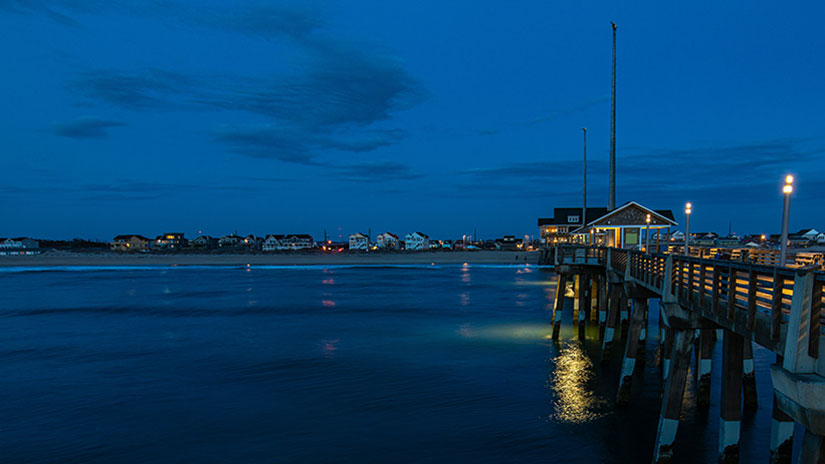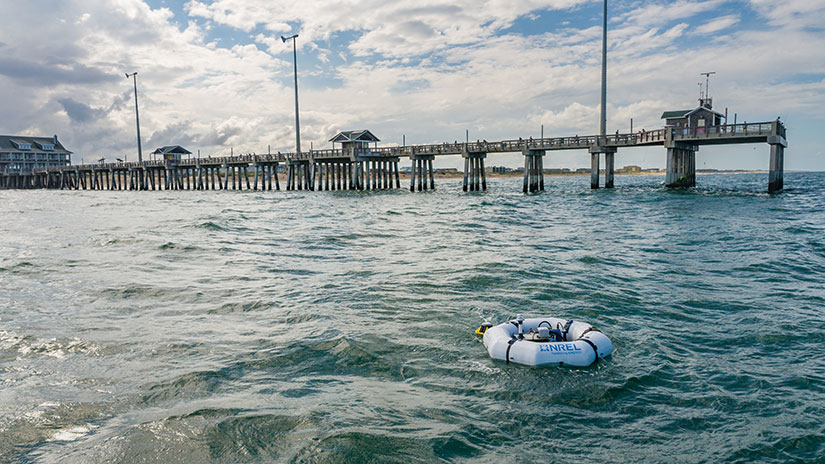Ocean Energy Could Be a Golden Thread for Coastal Communities
Community-Led Clean Energy Transitions Will Help Pave the Way to Energy Security and Grid Resilience in the Face of Climate Change
Kanaloa, god of the ocean, is considered one of the most important deities in ancient Hawaii’s major pantheon. He affects ocean animals, wave patterns, and currents. Mythical figures like Kanaloa are not just characters in ancient stories—they are also symbols of ancestral memory, environmental wisdom, and a deep connection between people and our Earth.
For centuries, the ocean has been the lifeblood of coastal cultures. And now, the ocean’s essence might take on another meaning.
Waves, tides, and currents hold an immense amount of energy that could sustain remote coastal and island communities in an entirely new way. But what if a framework existed that could guide renewable energy experts as they support communities in their clean energy transition, empowering communities to determine where and how marine energy fits within their home based on their unique relationships to the ocean and environment?
To help answer that question, researchers at the U.S. Department of Energy’s (DOE) National Renewable Energy Laboratory (NREL) and Pacific Northwest National Laboratory (PNNL) are developing the Deployment Readiness Framework (DRF) to support energy transitions in remote coastal and island communities. The goal? To arrange marine energy as a thread in the coastal fabric, rather than a wrinkle.
Funded by DOE’s Water Power Technologies Office (WPTO), the DRF is based in practical tools and approaches, which can support communities interested in marine energy as part of their energy transition. Researchers, technical assistance experts, and program officers at DOE can use this framework to better understand where communities are in their energy transition and how to meet community needs with technical assistance or financial support.
“Humans need a place to go and grow, and we need to find a way to do that while protecting our environment,” said Kerry Strout Grantham, NREL's principal investigator for the DRF and coastal energy systems lead. “It's become evident that we need a more careful, nuanced approach to human expansion, particularly around our energy infrastructure.”

Early morning light falls on Jennette’s Pier in North Carolina’s Outer Banks. Photo by Werner Slocum, NREL
Cultivating Collaboration
Building on the Energy Transitions Initiative Partnership Project (ETIPP)—supported in part by WPTO—NREL and PNNL are developing the DRF in close collaboration with communities, stakeholders, and end users such as program officers of DOE’s technical assistance programs and researchers at national laboratories. The team’s collaborative approach will help identify what tools will have the greatest impact on community-driven energy transitions. Gaining insight from various groups will also allow the team to test and improve the framework during development, so that the use of marine energy can be meaningfully tailored to each community’s needs and values.
To build the best guide for marine energy experts fostering community-led clean energy transitions, the DRF team is also taking a thorough approach, developing the DRF in three stages: the learning phase, design phase, and implementation phase. Researchers recently completed the learning phase, documenting the various perspectives, scenarios, and priorities that set the foundation for understanding community readiness for a clean energy transition.
Laying a Cornerstone
PNNL kicked off the learning phase by identifying metrics that could help renewable energy experts understand a community’s readiness. In a PNNL-published report, researchers found that things like technical capacity, environmental factors, and social implications play a huge role in a community’s ability to employ renewable energy technologies. And more so, these are the factors that technical assistance experts need to pay attention to, especially when guiding communities to determine where marine energy fits into their coastal infrastructure.
After outlining the readiness factors, the NREL team used these metrics to inform and implement the second step of the learning phase: interviews and synthesis. Through curated outreach and engagement, NREL surveyed and interviewed key people involved in DOE’s technical assistance programs.
In an NREL-published report, the team outlined their interview process, goals, and key findings. Participants had the opportunity to share their unique perspectives and experiences with renewable energy technical assistance projects, uncovering the priorities and potential challenges that communities navigate when considering clean energy solutions like marine energy. The team then used recurring themes from participants’ responses to set the foundation for the DRF.
Sustained, consistent, and iterative collaboration among communities, national laboratories, and DOE is at the heart of this framework. Through this iterative collaboration, DOE can identify where funding and support is needed beyond the life span of technical assistance projects. The DRF will also uphold community-centered plain language and a peer-to-peer process that connects communities to share lessons learned.
These cornerstones are key in supporting a community-driven, ecologically sustainable design that seeks to co-optimize energy resilience, ecosystem resilience, and community development goals.
High Impact, Big Vision
The DRF symbolizes a pivotal moment in how we think about and implement marine energy technologies, especially at the community level. And the collaboration between WPTO, PNNL, and NREL serves not only as an example of a collective approach but also as a community-first mindset.
Social science is critical to informing WPTO and national laboratories on how they, and marine energy, can best meet the unique needs of remote coastal and island communities. The DRF is a novel approach to marine energy research and development—showcasing how DOE can facilitate and accelerate clean energy transitions by sparking dialogue across WPTO, national laboratories, and communities.
The DRF provides an anchor for these discussions, reminding renewable energy experts that the goal is to build capacity within communities. By empowering communities to explore, use, and maintain renewable energy technologies, the DRF fosters self-sufficiency, energy independence, and community resilience. It is in this way that marine energy can become a meaningful thread in the larger coastal fabric.

Technologies like the National Renewable Energy Laboratory’s wave-powered desalination device could help communities build greater resilience through reliable, locally sourced energy that is more affordable and sustainable. Photo from Coastal Studies Institute
A Future Fabric of Ocean-Powered Communities
Now that the learning phase has concluded and the groundwork for the DRF has been laid, the team will focus on the design and implementation phases to continue supporting marine-energy-focused, community-led clean energy transitions.
"Many remote, rural, island, and coastal communities are eager to transition to marine energy," Grantham said. “These transitions are slow. They have a lot of moving parts, and there are a lot of real problems to grapple with. But I’m hopeful the DRF can help make these transitions feel less complex and more streamlined for everyone involved.”
Read about PNNL’s work on the DRF and learn more about NREL’s efforts to engage with stakeholders in DOE’s technical assistance programs. And subscribe to the NREL water power newsletter, The Current, to make sure you do not miss a water power update.
Last Updated May 28, 2025
